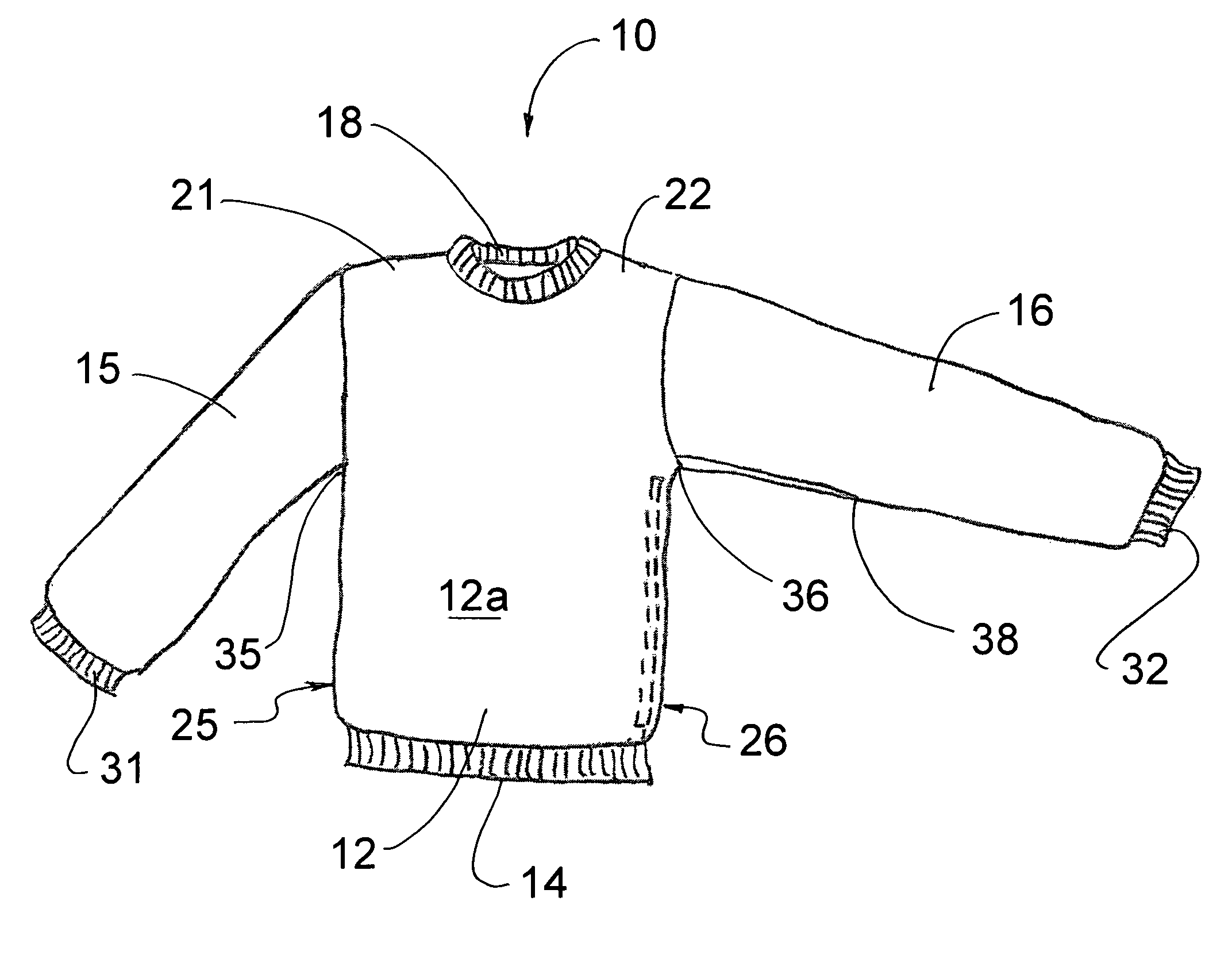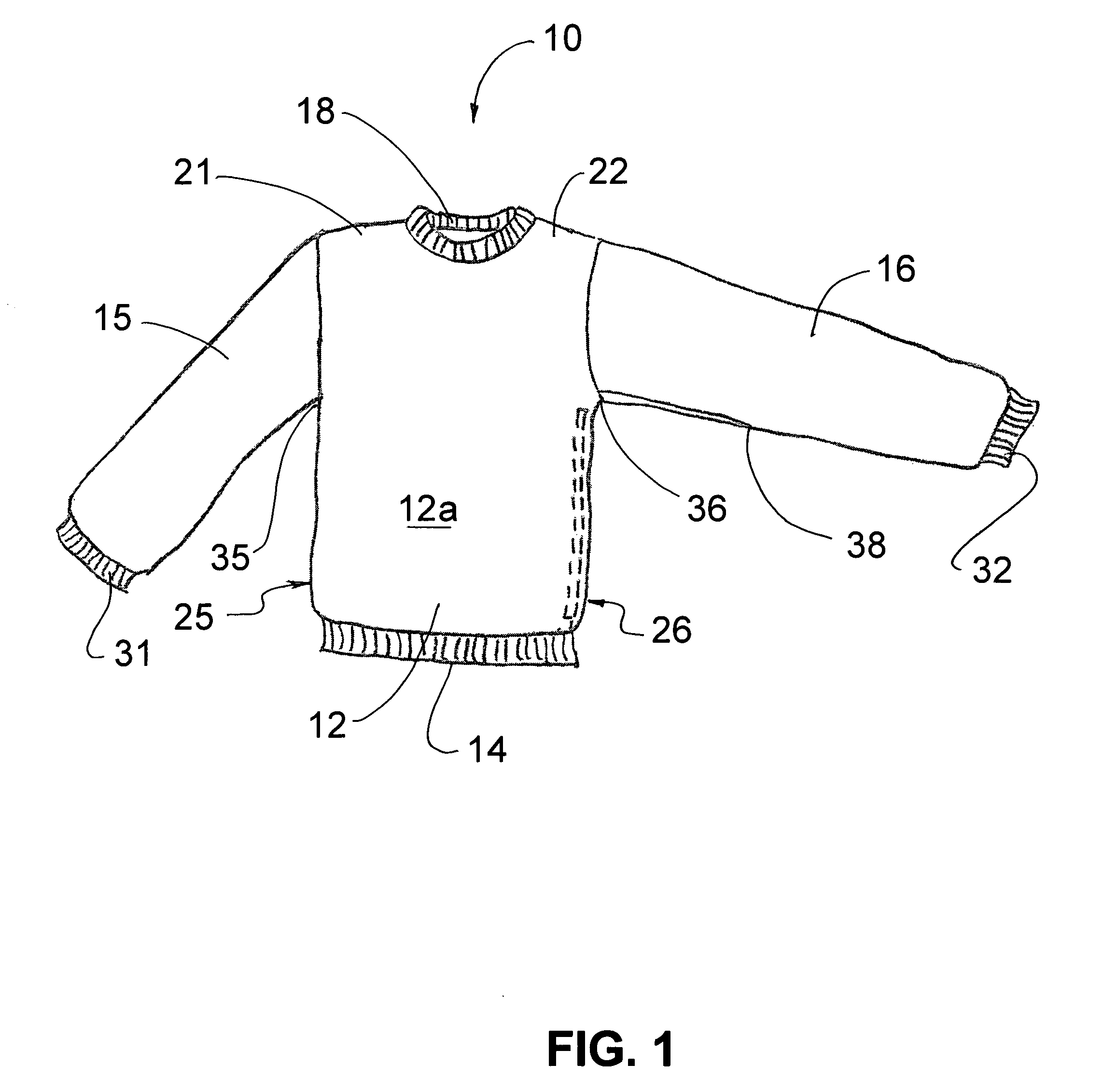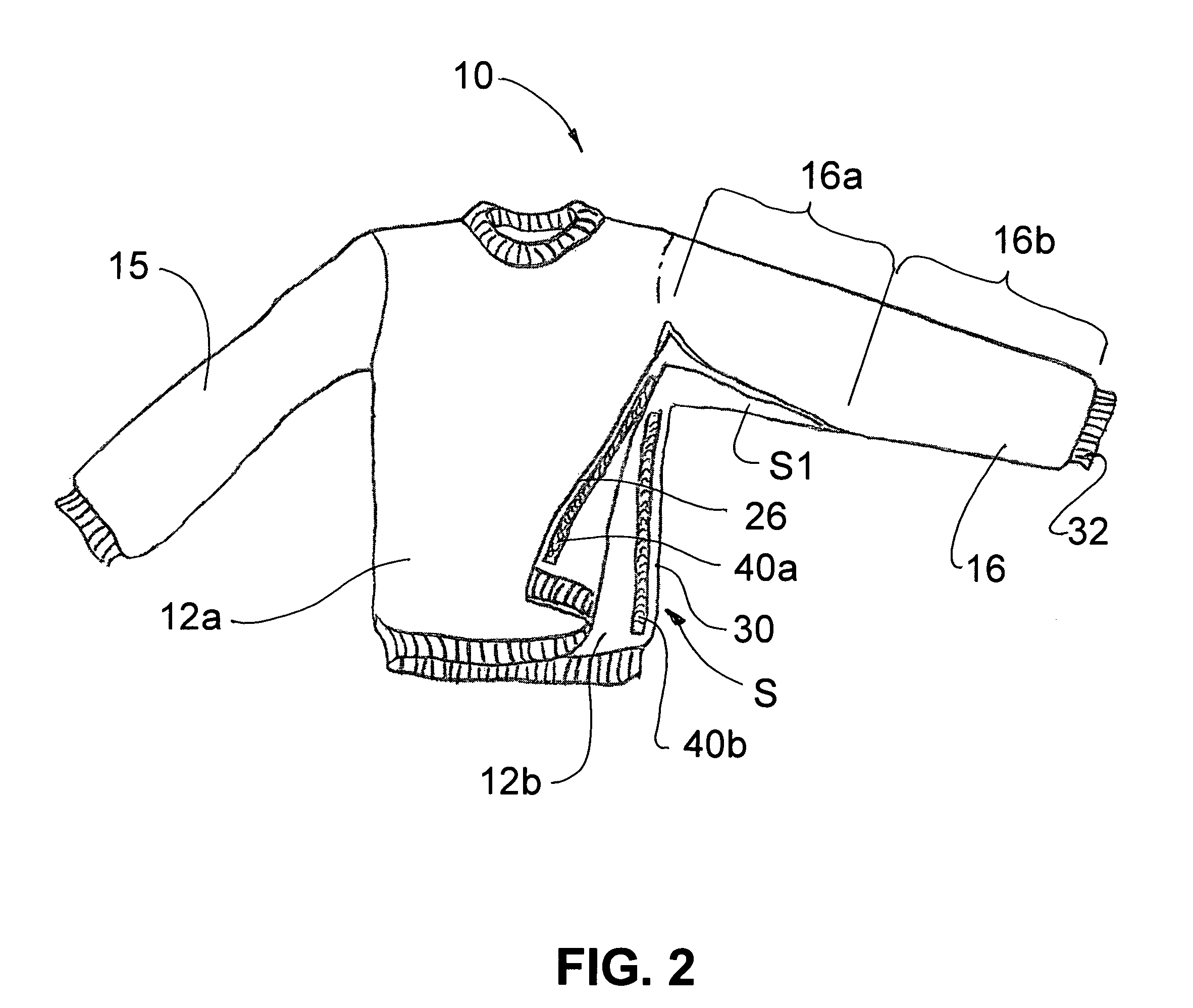Upper garment for patient
a patient and upper garment technology, applied in the field of body garments, can solve the problems of discomfort, inconvenience, inconvenience, etc., and achieve the effect of convenient wear and access to the wearer's mid-arm region
- Summary
- Abstract
- Description
- Claims
- Application Information
AI Technical Summary
Benefits of technology
Problems solved by technology
Method used
Image
Examples
Embodiment Construction
[0068]The present invention now will be described more fully hereinafter with reference to the accompanying drawings, in which preferred embodiments of the invention are shown. This invention may, however, be embodied in many different forms and should not be construed as limited to the embodiments set forth herein; rather, these embodiments are provided so that this disclosure will be thorough and complete, and will fully convey the scope of the invention to those skilled in the art. Like numbers refer to like elements throughout.
[0069]With reference initially to drawing FIGS. 1-3, the present invention is an upper body garment that is adapted to be worn as outerwear (i.e., shirt or jacket) by a person to whom medical lines are, or may become, attached to one of the wearer's arms. By way of example, the following describes a preferred embodiment of the present invention wherein the garment is specifically adapted to be worn by a patient who has, or who may come to have, medical lin...
PUM
 Login to View More
Login to View More Abstract
Description
Claims
Application Information
 Login to View More
Login to View More - R&D
- Intellectual Property
- Life Sciences
- Materials
- Tech Scout
- Unparalleled Data Quality
- Higher Quality Content
- 60% Fewer Hallucinations
Browse by: Latest US Patents, China's latest patents, Technical Efficacy Thesaurus, Application Domain, Technology Topic, Popular Technical Reports.
© 2025 PatSnap. All rights reserved.Legal|Privacy policy|Modern Slavery Act Transparency Statement|Sitemap|About US| Contact US: help@patsnap.com



